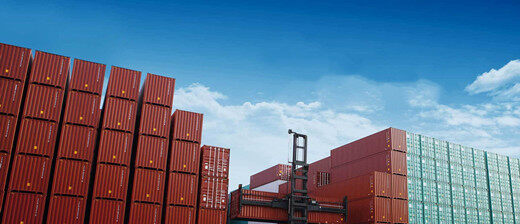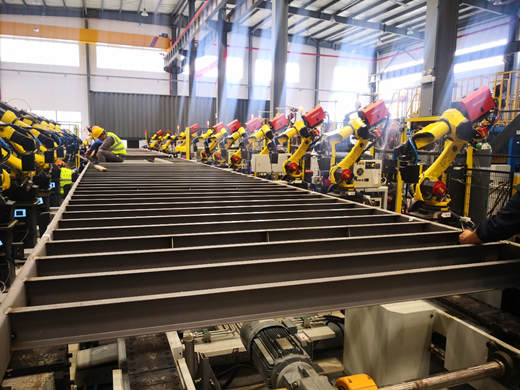Container welding plays a pivotal role in ensuring the durability and safety of cargo transport systems. Let's delve into the various facets of container welding, material classification, and the invaluable role played by the Artsen II PM500F welding machine in improving welding efficiency and quality.
I. Container Classification and Features:
Containers, known for their versatility and ease of mechanical handling, serve as indispensable cargo containers for seamless transportation. They come in various types, each catering to specific cargo and logistical needs:
1)Types of Containers:
Classified by Cargo: general cargo containers, bulk cargo containers, liquid cargo containers, and refrigerated containers...
Classified by Materials: wood containers, steel containers, aluminum alloy containers, fiberglass containers, and stainless steel containers...
Classified by Structure: foldable containers, fixed containers (including closed-top containers, open-top containers, and flat rack containers)...
Classified by Weight: 30 tons containers, 20 tons containers, 10 tons containers, 5 tons containers, and 2.5 tons containers...
2)Materials of Containers:
Different container materials offer distinct advantages and limitations:
Steel Containers: known for their strength, structural integrity, waterproof property, and cost-effectiveness. However, they tend to be heavier and susceptible to corrosion.
Aluminum Alloy Containers: made of aluminum alloy materials, featuring lightweight, beautiful appearance, anti-corrosion, good elasticity, convenient processing and low processing and repair costs, and long service life. Yet, they are costlier and present challenges in welding.
Fiberglass Containers: made of fiberglass material, renowned for their high strength, good rigidity, large capacity, heat insulation, corrosion resistance, good chemical resistance, easy to clean, and easy to repair. Nonetheless, their weight is large, easy to age, and the strength of the screw is reduced.
3)Container International Standard Dimensions:
The present international standards comprise 13 variations: same width (2438mm), 4 kinds of length (12192mm, 9125mm, 6058mm, and 2991mm), and 3 kinds of height (2896mm, 2591mm, 2438mm).

P1 Brokeup Diagram of Container
II. Container Welding Clients
China International Marine Containers (CIMC) Group stands as a global leader in logistics and energy equipment supply, headquartered in Shenzhen, China. The company is dedicated to several primary business domains, including containers, road transport vehicles, energy and food equipment, marine engineering, heavy-duty trucks, logistics services, and airport equipment, providing high-quality and reliable equipment and services. Supporting these thriving businesses are specialized financial management through a finance company and financial solutions provided by a financial leasing company. As a diversified multinational conglomerate serving the global market, CIMC has over 300 member enterprises and four listed companies in regions like Asia, North America, Europe, and Australia. Its clientele and sales networks span 100+ countries and regions worldwide.
The container industry represents CIMC's longest-standing and largest-scale business, boasting numerous production bases strategically located in major ports across mainland China. We offer a comprehensive range of container products and possess suppliers with completely independent intellectual property rights, encompassing dry containers, refrigerated containers, special containers, modular buildings, and flooring across five major business sectors. CIMC's products are pervasive in major logistics systems worldwide, including North America, Europe, and Asia. Since 1996, CIMC has consistently maintained its position as a global leader in container production and sales. In 2007, CIMC became the first enterprise in the global container industry to surpass an annual output of 2 million TEUs.

P2 CIMC Factory
III. Challenges Encountered in Container Welding
A container comprises front and rear wall panels, upper and lower base plates, and left and right side panels. The manufacturing process involves the following steps as illustrated in the diagram:
The base plate is composed of 1.6mm side panels and 4mm channel steel, joined by angular welding seams using robotic welding. The client stipulates a minimum fusion depth of 1mm, a dry extension of 20-30mm, a low spatter, stable operation of the welding power source, and reliable communication with the robot.
IV. Features and Advantages of Megmeet Artsen Plus500D Welding Machine
In response to the client's specific requirements, the Megmeet Artsen Plus500D welding machine is recommended to be used in conjunction with specialized machinery for welding requests, employing the direct current smooth short-circuit transition mode. The Artsen Plus500D weldedr stands as a fully digital high-frequency intelligent inverter welding machine, designed for carbon steel material's direct current positional welding. This welding machine offers several advantages to address the client's needs:
1)High-frequency inverter up to 100KHz, with 'zero-delay' sampling, precisely controlling the transition state of molten droplets, ideal for welding galvanized plates, ensuring stable arcs.
2)Unique smooth short-circuit transition process, ensuring a gentle arc, calm molten pool, and minimal spatter. Enables faster welding speeds with significantly reduced overall heat input, ideal for thin plate welding.
3)Wire feeding mechanism employing high-performance digital motors, encoder feedback, four-wheel wire feeding, and precise wire feeding structures for stable wire feeding, ensuring excellent welding quality.
4)Equipped with various communication modes, including analog and digital, facilitating easy and efficient communication with specialized machinery and robots.
5)High power source reliability and parameter consistency ensure stable and reliable welding of large batches over extended periods.
6)Welding Parameters: Welding current of 290A, voltage at 27.5V, utilizing a 1.2mm solid core welding wire with ER50—6 material, comprising 80% Ar + 20% CO2, gas flow rate of 20L/min, employing direct current reverse polarity, a dry extension of 20-30mm, and achieving a welding speed of 1000mm/min.
V. Comparison of Container Welding Effects
Implementing the Megmeet Artsen Plus500D in conjunction with robotic welding at CIMC satisfies client requirements:
1)Weld Seam Formation: Exhibits excellent formation, exceeding 1mm fusion depth, with minimal surface spattering, meeting client specifications.
2)High Reliability: The welding machine operates in the client's environment over extended shifts totaling 22 hours, showcasing consistent weld seams and high reliability.
VI. Application of Artsen Plus500D Welding Machine

P3 Artsen Plus500D welder On-site Application






